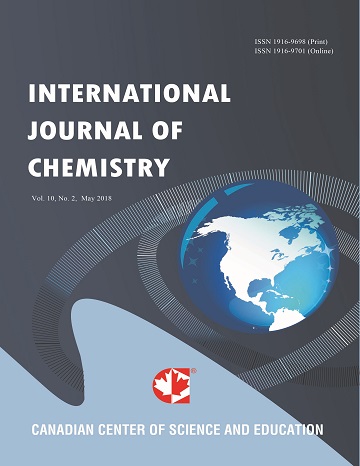Antimicrobial Glycosides and Derivatives from Roots of Picralima nitida
- Kouam Jacques
- Laure B. K. Mabeku
- Jules R. Kuiate
- Alembert T. Tiabou
- Zacharias T. Fomum
Abstract
Phytochemical screening was performed on the roots of Picralima nitida, resulting in the isolation of three new coumestan glycosides, 3-hydroxy-9-methoxy-2-[2’(E)-3’-methyl-4’-O-?-D-galactopyranosylbutenyl]-8- isoprenylcoumestan (1), 3-hydroxy-9-methoxy-2-[2’(E)-3’-methyl-4’-O-?-D-glucopyranosylbutenyl]-8-[2”(E) -3”-methyl-4”-oxobutenyl]coumestan (2), and 3-hydroxy-9-methoxy-4-[2’(E)-3’-methyl-4’-O-?-D- glucopyranosylbutenyl]-8-[2”(E)-3”-methyl-4”-oxobutenyl]coumestan (3). Acid hydrolysis of 1, 2 and 3 afforded three new coumestan, 3-hydroxy-9-methoxy-2-[2’(E)-4’-hydroxy-3’-methylbutenyl]-8- isoprenylcoumestan (4), 3- hydroxy-9-methoxy-2-[2’(E)-4’-hydroxy-3’-methylbutenyl]-8-[2”(E)-3”-methyl-4”- oxobutenyl]coumestan (5), and 3-hydroxy-9-methoxy-4-[2’(E)-4’-hydroxy-3’-methylbutenyl]-8-[2”(E)-3”- methyl-4”-oxobutenyl]coumestan (6), respectively. Structures of these compounds were elucidated on the basis of spectroscopic data and chemical transformations. Compounds 1 - 6 showed antimicrobial activities against Escherichia coli, Staphylococcus aureus, and Proteus vulgaris.
- Full Text:
 PDF
PDF
- DOI:10.5539/ijc.v3n2p23
Index
Contact
- Albert JohnEditorial Assistant
- ijc@ccsenet.org
